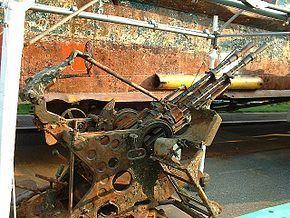Date 22 December 2001 Combatants North Korea, Japan | Result Japanese victory | |
 | ||
15 killed1 naval trawler sunk 3 wounded1 patrol boat damaged Similar Battle of Pyongtaek, Battle of Kyongju, Battle of Hill 282, Battle of Sariwon, Battle of the Hook | ||
The Battle of Amami-Ōshima, also known as the Spy Ship Incident in the Southwest Sea of Kyūshū (九州南西海域工作船事件, kyūshū-nansei-kaiiki-kōsakusen-jiken), was a six-hour confrontation between the Japanese Coast Guard and an armed North Korean vessel, which took place near the island of Amami-Ōshima, in the East China Sea. The encounter ended in the sinking of the North Korean vessel, which the Japanese authorities later announced was determined to have been a spy craft. The encounter took place outside Japanese territorial waters, but within the exclusive economic zone, an area extending 200 miles from Japanese land, within which Japan can claim exclusive rights to fishing and mineral resources.
Contents
Battle of amami shima
Background
An unidentified ship was spotted in Japanese waters on Friday, 21 December 2001. The armed trawler was detected by a communications station in Kikaijima, Kagoshima, which was under control of the Japanese Defense Intelligence Headquarters. In 1999, another North Korean vessel encountered by the Japanese Coast Guard was claimed by Japan to have been a spy craft, though North Korea denied it; other incidents have occurred involving illegal fishing and drug trafficking. With the North Korean vessel's intentions unclear, the Japanese Coast Guard decided to intercept it.
Battle
Early the following morning, the ship was chased by four Japan Coast Guard vessels, who ordered it to halt, and fired 25 warning shots upon the ship when those orders were ignored. A six-hour firefight ensued, in which over 1,000 machine gun rounds were fired by both sides; the North Korean crew were said to have wielded shoulder-held rocket launchers. The North Korean trawler was meanwhile hit by a number of 20 mm rounds. Several explosions not directly related to Japanese attacks rocked the ship before it was sunk. According to The Guardian, "fifteen survivors were seen clinging to a buoy in heavy seas, but the Japanese ships were ordered to ignore them because of fears that they would use force to resist capture". Two bodies were recovered, thirteen more persons were declared missing and presumed dead several days later.
The Special Boarding Unit was mobilized to board the ship, but did not do so as they had to wait for official orders from the Japanese Defense Agency. The ship sank before such orders arrived.
The engagement was recorded on video from Japanese Coast Guard vessels.
Aftermath
In 2003 the trawler was raised by the Japanese to confirm her origin and intentions. Inspection of the hull determined she was of North Korean origin and most likely an infiltration and spy vessel. It was revealed that the vessel was camouflaged as a Chinese or Japanese fishing boat and that she could develop 33 knots, far faster than any commercial trawler. The ship had also a hidden double hatch in the stern to be used as an exit door for speedboats. After the inspections were deemed complete the hull was displayed at the Japan Coast Guard Museum Yokohama in Yokohama, where she has become a popular tourist attraction.
